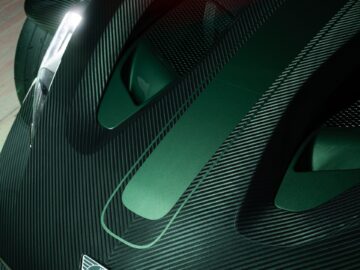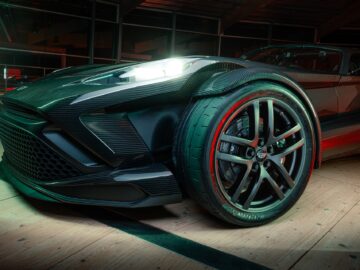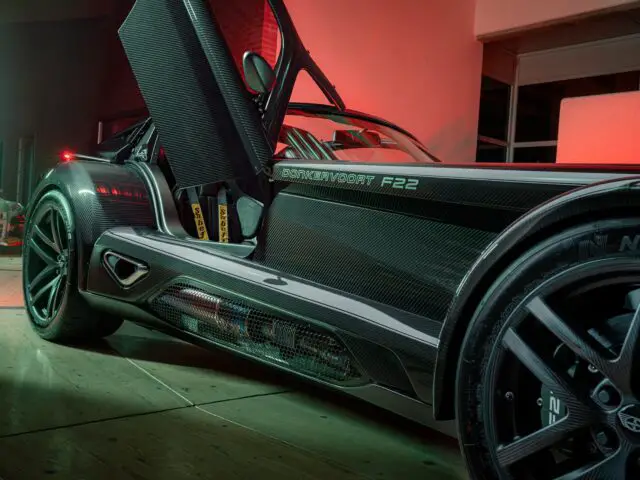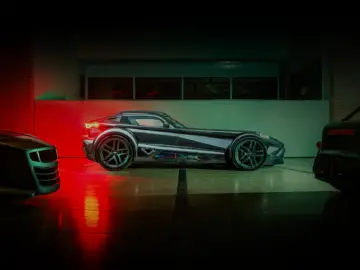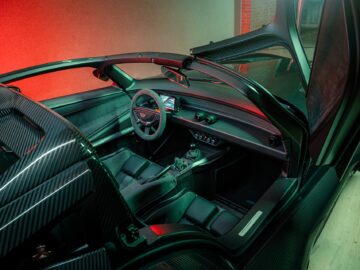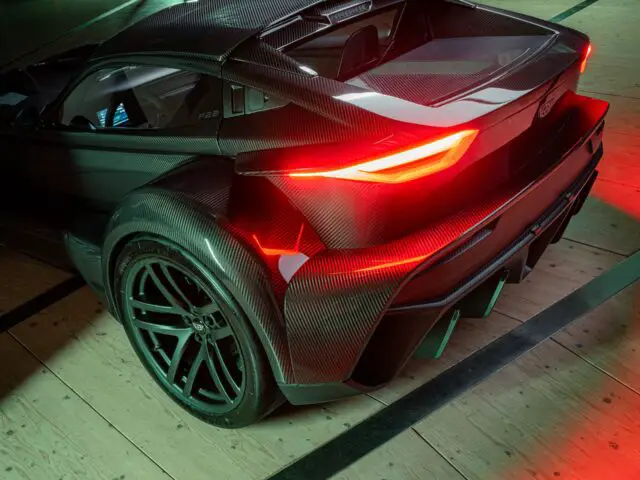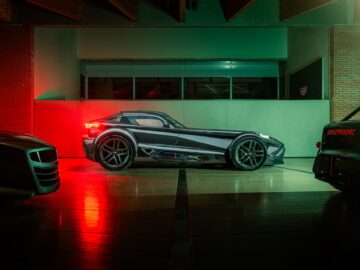“Donkervoort chooses Ford engines again”
“Donkervoort in partnership with Ford”
Officially, Donkervoort has yet to announce the cooperation with the new engine supplier. Looking at all the facts, one quickly arrives at Ford. For example, Amko Leenarts – for almost thirteen years the design boss for Ford Europe – has been affiliated with Donkervoort as an Advisory Board Member for almost five years at the time of writing. Donkervoort Automobiles and Ford thus have short lines of communication. Moreover, Ford can also provide technical support.
Historically sound
Moreover, opting for Ford powertrains is historically responsible. For example, in the past Donkervoort delivered the D8 Zetec, so with a Ford engine. The S8A and S8AT also had a Ford powertrain: a 2.0-liter OHC. In short: so there is history.
Other brands have gone before Donkervoort
In addition, Ford is gaining ground as an engine supplier to smaller manufacturers. UK-based Ariel Motors – known for the Atom and Nomad -, for example, has already switched to Ford engines, while Ariel previously had a deal with Honda. The BAC Mono – an extreme single-seater from the United Kingdom – is available with a 2.3-liter EcoBoost four-cylinder from Ford.
EcoBoost engines: 2.3 I4, 2.7 V6, 3.0 V6 or 3.5 V6
Within Ford’s lineup, there are four engines that could be of interest to Donkervoort. The first is a 2.3 EcoBoost. This is because it can also be positioned longitudinally, something that is a must in a Donkervoort. In the Focus ST, this 2,253 cc four-cylinder produces 280 hp with no less than 420 Nm of torque. In the Ford Mustang, this power source is even good for 317 hp and 434 Nm of pulling power. The power output of this powertrain can be easily increased with some modifications. The safe spectrum runs from 350 to even 500+ hp. That is interesting for a manufacturer like Donkervoort. Compared to the Audi engine, Donkervoort does sacrifice one cylinder.

V6 engines as well
An alternative is the 3.5-liter V6 EcoBoost. This block – with the help of two turbos – can easily produce 450 hp with 690 Nm of torque. Ford also supplies a much newer 3.0-liter EcoBoost V6 engine, for example in the Raptor. In that model, this powertrain delivers more than 410 hp. Plenty of options, then. An alternative is the 246 kW (335 hp) strong 2.7L EcoBoost V6 that also comes in the Raptor. The Donkervoort F22 is optically much larger and wider than the D8 GTO. So there is room to possibly fit a V6 in the engine bay. Furthermore, all Ford engines lend themselves to tuning, think parties like Mountune or Cosworth.
Expansion in the United States
The main advantage of Ford’s 2.3, 2.7, 3.0 and 3.5 engines: they are all homologated for use in the United States. That would mean that Donkervoort could further expand in the USA, an important market where a lot of wealthy car enthusiasts live. At present, Donkervoort is only active there on a small scale.
Alternative to Ford?
Well, those are few and far between. Affordability and reliability are also important. Koenigsegg still has a Koenigsegg Tiny Friendly Giant Twin Turbo Freevalve 3-cylinder on the shelves. That little block produces 600 hp at 7,500 rpm and reaches a red line of 8,500 rpm. Torque is 600 Nm between 2,000 and 7,000 rpm. The powerplant itself weighs only 70 kilograms. That fits well with Donkervoort’s “less is more” philosophy. It would be quite surprising if Donkervoort chooses a small-scale player like Koenigsegg, also given its relationship with Ford.
Donkervoort F22 Final Five
To bid farewell to the Audi era in a fitting way, Donkervoort comes out with the F22 Final Five. This version has carbon-ceramic brake discs (saves a total of 10 kilograms), a titanium exhaust (saves 4 kilograms), lightweight carbon wheels and a body finished in visible-carbon. The result is a Donkervoort F22 that weighs not 750 but only 716 kilograms. In the Final Five, the Audi 2.5 liter R5 TFSI still delivers 367 kW (500 hp) with 640 Nm of torque. That’s enough power to sprint to 100 km/h in 2.5 seconds and from 0-200 in 7.5 seconds. The top speed is 290 km/h. The price tag of the F22 Final Five? A hefty 315,000 euros in Europe, excluding taxes. That brings the price of a Donkervoort F22 Final Five in the Netherlands quickly to around 450,000 euros including VAT and BPM, if not more.
Audi engines in Donkervoort
Donkervoort introduced Audi’s five-cylinder in 2011 in the D8 GTO. This engine transformed an already fast Donkervoort into something exceptional. Initially, the D8 GTO produced 280 kW – Audi did not allow the engine to produce more power – but by the time the F22 arrived in late 2022, that same engine was producing 367 kW. Higher engine power was allowed by Audi at the time.
Statement from Donkervoort
“As much as the five-cylinder engine has defined Donkervoort, a saying also applies: when one door closes, another opens. Soon the exclusive club of hypercar brands will have something new to worry about. Spoiler alert: it’s not electric, nor is it a multi-million dollar car. Watch this space!” said Donkervoort in a statement. What do you think? Ford? Or another manufacturer after all?
Hidden hint?
Donkervoort has released several photos of the F22 Final Five. One of the photos shows a Donkervoort D20 in the background, of which only two examples were built. With that model, the collaboration with Audi began, albeit on a very small scale. Even more interesting is that the D20 has a 2.8-liter Audi V6. Could that be a hint of a Donkervoort with a V6 engine?

